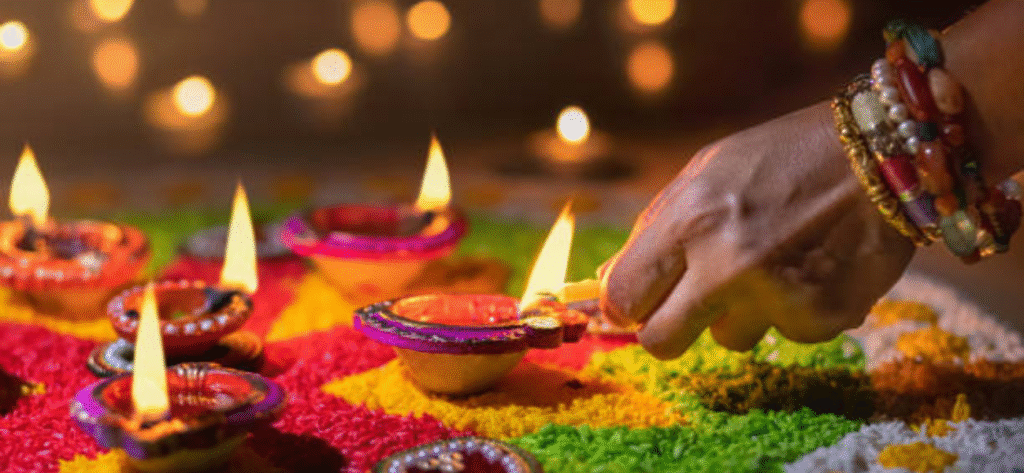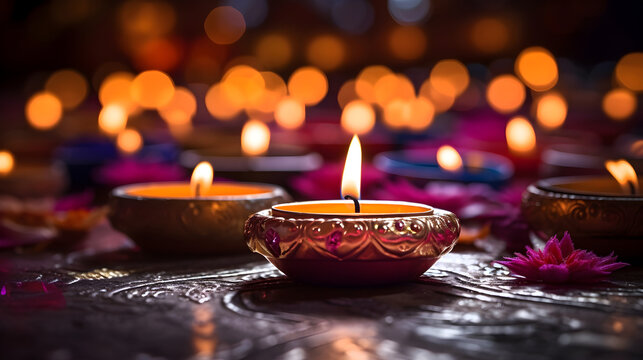The Festival of Lights
Introduction
Diwali, also known as Deepavali, is one of the most vibrant and widely celebrated festivals in India. It marks the victory of light over darkness and good over evil. Celebrated by millions of people across religions, Diwali brings joy, unity, and spiritual meaning.

The Story Behind Diwali
Different regions of India celebrate Diwali for different reasons. The most popular story comes from the Ramayana, where Lord Rama returns to Ayodhya after defeating the demon king Ravana. The people lit oil lamps (diyas) to welcome him home, which is why lighting lamps remains a central tradition today.
Preparations and Rituals
Diwali celebrations usually last for five days:
- Dhanteras – The first day is for buying gold, silver, and utensils, symbolizing wealth.
- Naraka Chaturdashi or Choti Diwali – Marks the victory of Lord Krishna over Narakasura.
- Main Diwali Day – Worship of Goddess Lakshmi (goddess of wealth), lighting diyas, bursting crackers, and family feasts.
- Govardhan Puja – Celebrated to honor Lord Krishna lifting the Govardhan Hill.
- Bhai Dooj – Celebrates the bond between brothers and sisters.
Diwali Decorations and Sweets
Homes are cleaned and beautifully decorated with rangoli, candles, and fairy lights. Traditional sweets like laddus, barfis, and gujiyas are prepared and shared with friends and neighbors. The aroma of festive food fills the air, and new clothes are worn to welcome positivity and prosperity.
Eco-Friendly Celebrations
In recent years, people are moving towards eco-friendly Diwali by reducing firecrackers, using LED lights, and supporting local artisans. Celebrating responsibly helps protect the environment and ensures everyone enjoys the festival safely.


Leave a Reply